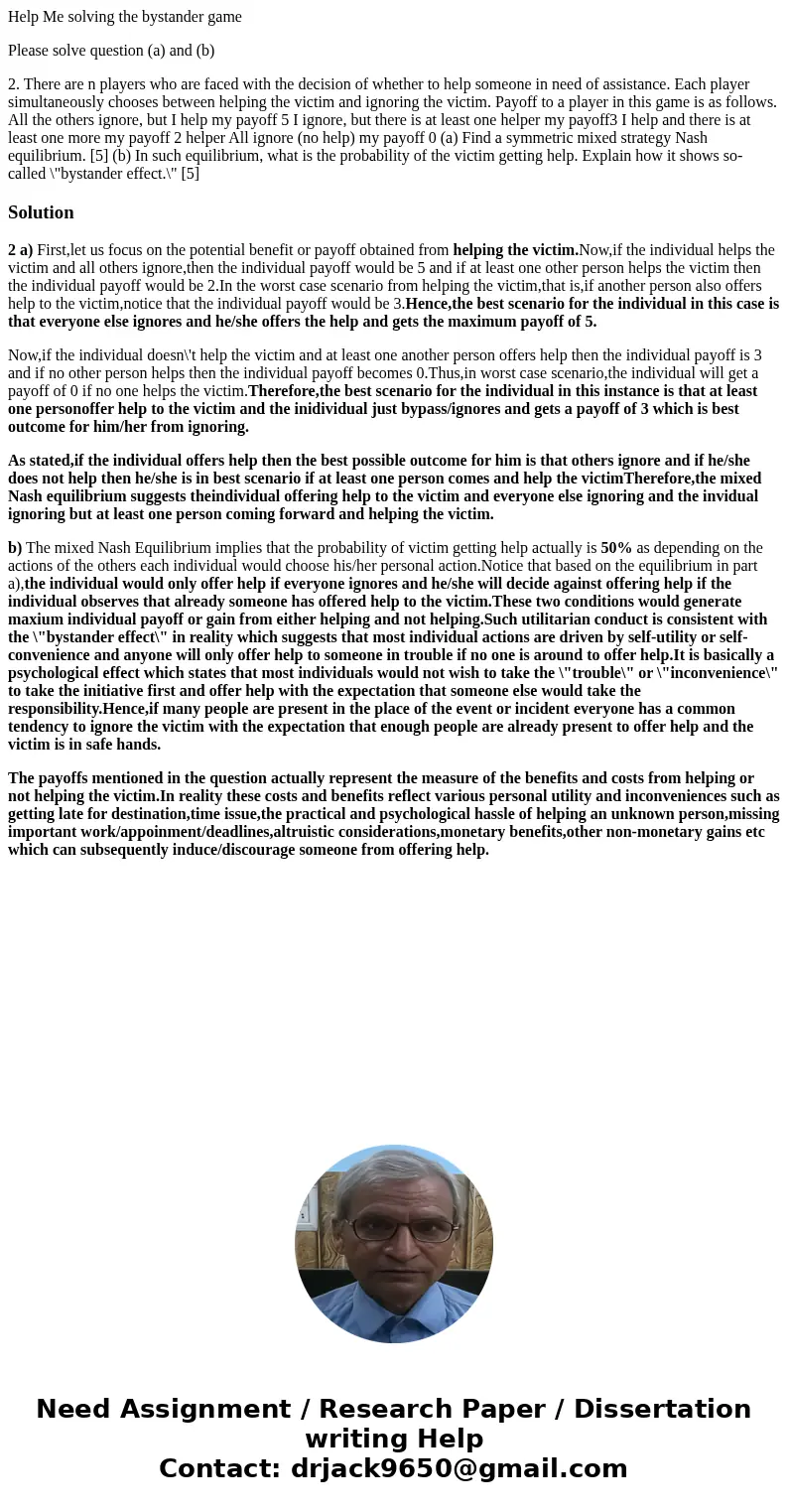Help Me solving the bystander game Please solve question a a
Help Me solving the bystander game
Please solve question (a) and (b)
Solution
2 a) First,let us focus on the potential benefit or payoff obtained from helping the victim.Now,if the individual helps the victim and all others ignore,then the individual payoff would be 5 and if at least one other person helps the victim then the individual payoff would be 2.In the worst case scenario from helping the victim,that is,if another person also offers help to the victim,notice that the individual payoff would be 3.Hence,the best scenario for the individual in this case is that everyone else ignores and he/she offers the help and gets the maximum payoff of 5.
Now,if the individual doesn\'t help the victim and at least one another person offers help then the individual payoff is 3 and if no other person helps then the individual payoff becomes 0.Thus,in worst case scenario,the individual will get a payoff of 0 if no one helps the victim.Therefore,the best scenario for the individual in this instance is that at least one personoffer help to the victim and the inidividual just bypass/ignores and gets a payoff of 3 which is best outcome for him/her from ignoring.
As stated,if the individual offers help then the best possible outcome for him is that others ignore and if he/she does not help then he/she is in best scenario if at least one person comes and help the victimTherefore,the mixed Nash equilibrium suggests theindividual offering help to the victim and everyone else ignoring and the invidual ignoring but at least one person coming forward and helping the victim.
b) The mixed Nash Equilibrium implies that the probability of victim getting help actually is 50% as depending on the actions of the others each individual would choose his/her personal action.Notice that based on the equilibrium in part a),the individual would only offer help if everyone ignores and he/she will decide against offering help if the individual observes that already someone has offered help to the victim.These two conditions would generate maxium individual payoff or gain from either helping and not helping.Such utilitarian conduct is consistent with the \"bystander effect\" in reality which suggests that most individual actions are driven by self-utility or self-convenience and anyone will only offer help to someone in trouble if no one is around to offer help.It is basically a psychological effect which states that most individuals would not wish to take the \"trouble\" or \"inconvenience\" to take the initiative first and offer help with the expectation that someone else would take the responsibility.Hence,if many people are present in the place of the event or incident everyone has a common tendency to ignore the victim with the expectation that enough people are already present to offer help and the victim is in safe hands.
The payoffs mentioned in the question actually represent the measure of the benefits and costs from helping or not helping the victim.In reality these costs and benefits reflect various personal utility and inconveniences such as getting late for destination,time issue,the practical and psychological hassle of helping an unknown person,missing important work/appoinment/deadlines,altruistic considerations,monetary benefits,other non-monetary gains etc which can subsequently induce/discourage someone from offering help.

 Homework Sourse
Homework Sourse